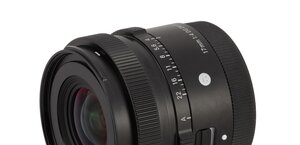Sigma 85 mm f/1.4 EX DG HSM
3. Build quality
In the photo below the tested Sigma is placed between the Canon EF 85 MM F/1.8 USM and the Voigtlander Apo Lanthar 90 mm f/3.5 SL II.
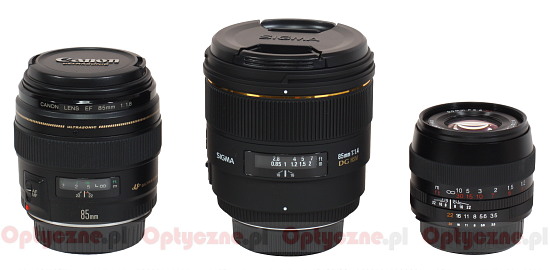 |
Please Support UsIf you enjoy our reviews and articles, and you want us to continue our work please, support our website by donating through PayPal. The funds are going to be used for paying our editorial team, renting servers, and equipping our testing studio; only that way we will be able to continue providing you interesting content for free. |
- - - - - - - - - - - - - - - - - - - - - - - - - - - - - - - - - - - - - - - - - - - - - - - -
The Sigma, tested here, belongs to the highest quality series of this producer marked by the EX symbol; conventionally it comes with a 3-year guarantee and you can extend it by additional two years. That aspect makes the Sigma stand out from the competitors and it is a proof of the confidence in its high build quality. That Japanese build quality can be certainly felt. The 85 mm f/1.4 EX DG HSM starts with a metal bayonet mount which surrounds a rear element, 33 mm in diameter. The rear element is positioned on the same level as the mount only when the sharpness is set at infinity. When we go to minimum focus the element hides by about 1 cm inside the barrel. The front element remains immobile so the mutual positions of elements change and it entails the change of the focal length. It is untypical because most of other 85 mm class constructions set focus moving the whole system of elements at once.
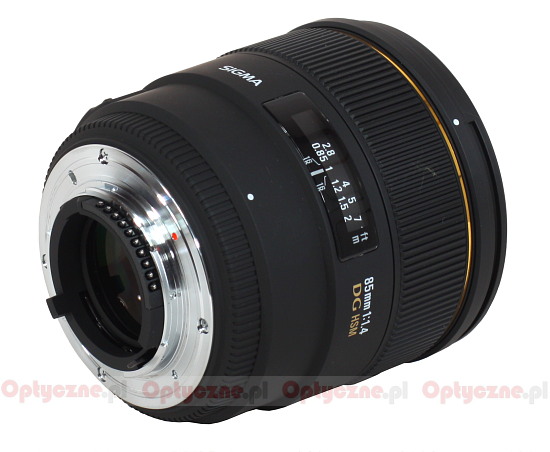 |
The lens’s barrel is padded with smooth black material which appeared in the EX series quite recently. On the left we see the AF/MF switch to choose the focusing mode. Even further on we meet a distance scale expressed in feet and meters behind a window. Right under it there is one depth of field marking- only for the f/16 aperture.
A rubber-padded, ribbed manual focus ring, 23 mm wide, is the next part of the lens. It’s well-damped and it works smoothly. Unfortunately you can’t speak here of any clockwork settings’ precision because the ring turns through only 90 degrees. Even a small movement means a huge jump on the distance scale. With a shallow depth of field near the maximum relative aperture such a jump might be acutely painful.
Behind the ring there is a gold stripe, symbolizing the EX series, and a fragment of the barrel with a mount to fix the hood, included as a part of the product bundle. At the front of the lens there is an impressive and immobile front element which diameter reaches almost 7 centimeters. It is surrounded by a non-rotating filter thread with a diameter of 77 mm.
As we mentioned before, the Sigma is optically the most complex 1.4/85 lens on the market. It consists of 11 elements positioned in 8 groups. The big front element is made of low-dispersion SLD glass and one element is aspherical. Inside, we can also find a circular aperture with nine diaphragm blades which can be closed down to f/16.
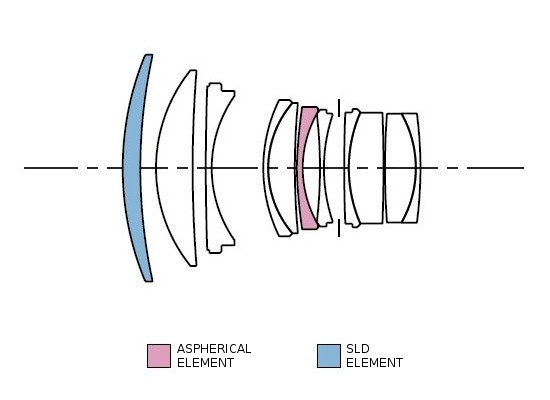 |
As usual, when you deal with the EX series you get a rich selection of accessories. Apart from two caps and a special case there is also an interesting petal-type hood – interesting because equipped with a dedicated hood adapter, expanding the length of the lens hood if we use reflex cameras with an APS-C size image sensor. It is supposed to block out extraneous light more efficiently and it might be useful taking into account the huge front element, positioned rather shallowly in the barrel.
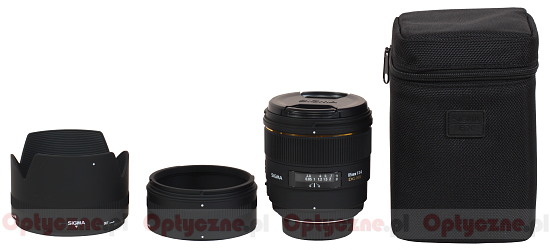 |
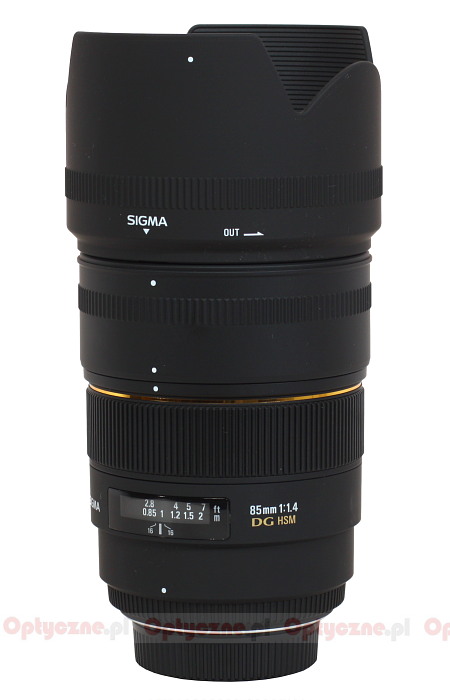 |





